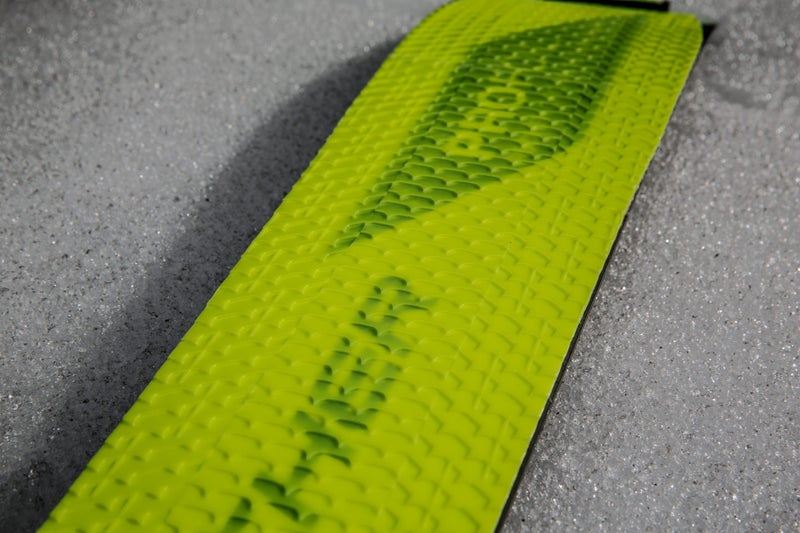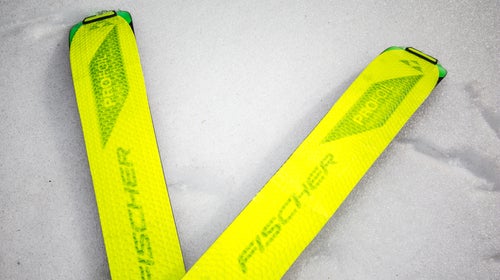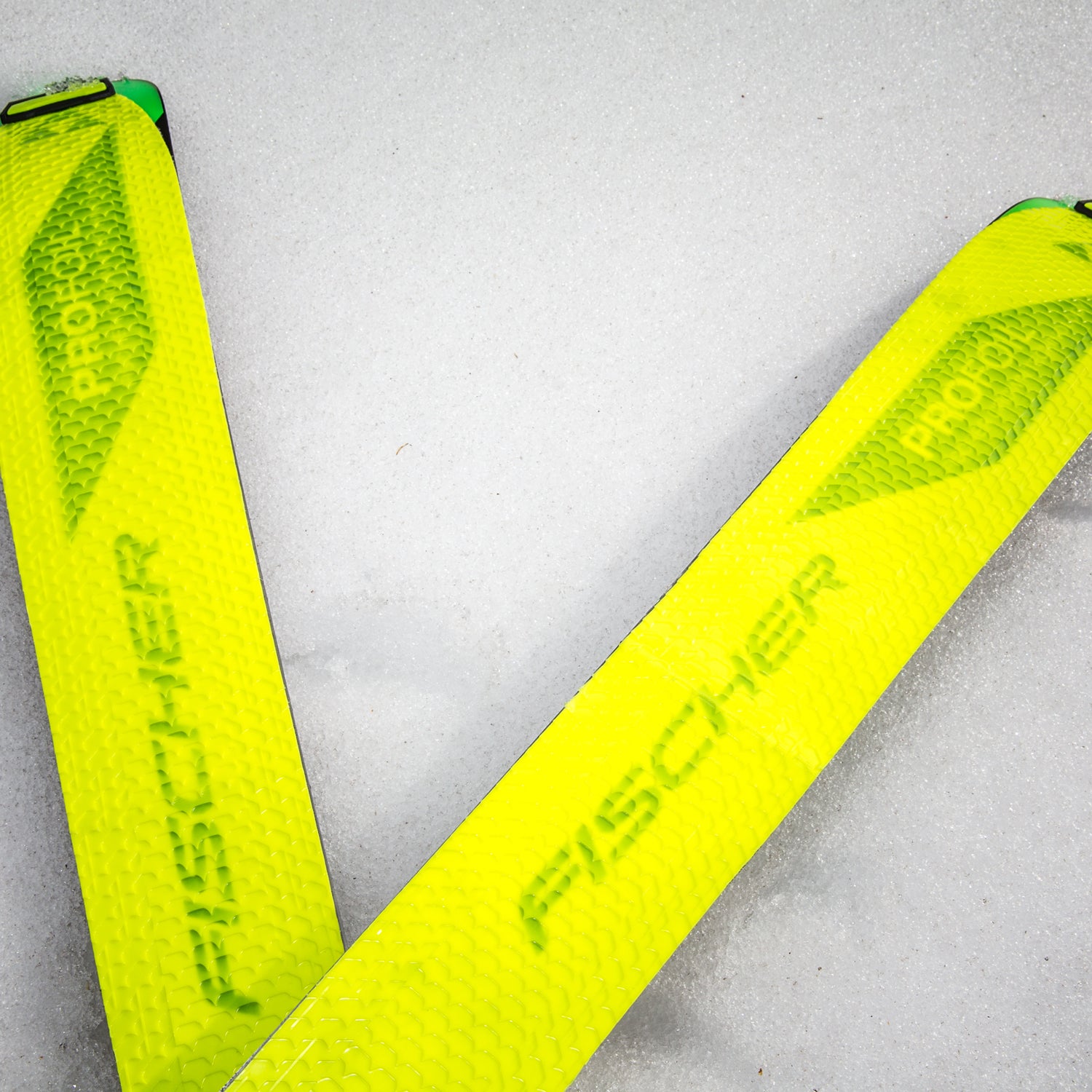Most climbing skins are made with nylon or mohair fibers (or a blend of both) that are angled so you can glide forward but not slide backward when going uphill. It’s a standard construction that works quite well, but Fischer thought it could improve on the design. Last year, the company released the Profoil, which ditches fibers in favor of solid plastic with beefed-up fish scales, similar to what you’d find on the base of a cross-country ski.
I’ve been testing these skins for the past month, and Axie Navas, senior editor and Buyer’s Guide editor at ���ϳԹ���, has had them for more than a year. We recently compared notes to list the pros and cons of this new technology.
Pros
1. No Moisture Absorption
Profoils are made from lightweight polyethylene so they don’t absorb water and thus gain weight like traditional skins, even if you’re slopping through wet slop in the Pacific Northwest. They render some products obsolete, like Black Diamond’s , intended to shield traditional skins from moisture.
2. Better Glide
Fischer claims its skins glide 20 percent better than mohair options, and we agree. They’re significantly faster on the flats—with the added control, you almost feel like you’re on cross-country skis—and the climbs, especially in sloppy snow. This is especially nice on long tours with short downhills that would otherwise require you to remove your ���쾱�Բ�.��With Profoils, you can easily ski down small pitches.
3. Excellent Grip
Fish scales on cross-country skis work only so well, so I expected the Profoils to lose grip sooner than my traditional skins. Not so. They held onto everything just as well as my regular Black Diamonds.
4. Durability
The full plastic construction means Profoils are supposed to be more durable than traditional skins. I used them for only a month but saw no noticeable wear. Axie is on her second season and has used them more than 50 times. Hers still look practically new, although the glue on the bases is starting to wear off.

Cons
1. Hard to Pack
When you’re storing regular skins, you can fold them so glue touches glue. Not so with Profoils. You’ll need to insert a plastic sheet between the bases to keep them from sticking, otherwise they’re nearly impossible to pry apart. Inserting the plastic is easy enough in the parking lot but harder to do on a windy ridge. It’s also time consuming and slows your transitions.
2. They Can Collect Snow
Profoils come precreased to make them easier to fold and store. But these creases can stick up from your skis’ bases and gather snow unless you’re diligent about smoothing them out.
3. They’re Noisy
This is a minor gripe, but both Axie and I noticed that Profoils are easily twice as loud as regular skins. Moving along, they emit a noticeable, sometimes grating sound, like a blade running over ice.
4. Storage
Because they’re made from plastic, Profoils don’t pack down nearly as well as their mohair counterparts. They take up more space (about 13 x 5.75 x 5 inches) and are harder to shove into a pack. That’s not a big deal when skinning up the resort, but it can be a pain on a long backcountry tour.
5. Price
The Profoils I use (from the Hannibal 100) sell for $226. That’s about $50 more than you’d pay for a top-of-the-line mohair option like Black Diamond’s high-end ���쾱�Բ�.��
Should You Buy Them?
Profoils make skinning faster and much more efficient, so they’re ideal if you’re putting in lots of miles and logging lots of vert in the backcountry. On the other hand, if you primarily skin before work or need to nail fast transitions, stick to the traditional design. Ultimately, we hope Fischer continues to tweak the Profoil design. With a few adjustments, we can see them becoming a stellar one-quiver skin.


